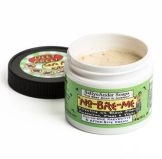
Are mosquitoes bugging you?
Mosquitoes are a problem this year. “Mosquito Man” Bob Hancock at Metro State University of Denver stated recently “We are not only breeding crazy numbers of mosquitoes here in Colorado with our rainy year, but we are keeping the ones that we’re breeding alive because it’s not getting as hot as it usually does.” Mosquitoes can be vectors for various diseases including West Nile Disease. Be proactive!
- Drain standing water where mosquitoes breed
- Wear long sleeves, pants, and hats
- Avoid going out at dusk and dawn
- Use mosquito repellent
- Other solutions:
- Mosquito Dunks are disks that can float on standing water like ponds, tanks and bird baths. The active ingredient is BT, Bacillus thuringiensis, which is a bacterium that is toxic to mosquitoes, but harmless to humans, animals and birds. It will kill mosquito larvae for 30 days after a treatment. Available at Harlequin’s.
- Mosquito Bits is another BT product that includes small pieces that can be spread over the surface of standing water. It acts more quickly than Mosquito Dunks but only lasts 14 days. It can be used in smaller containers. Available at Harlequin’s.
- Mosquito Barrier is a strong garlic concentrate that lasts 2-4 weeks and becomes odorless in hours. This is a repellant but will kill mosquitoes if the spray covers them. Mix 3 ounces with a gallon of water. (Recent research has shown that a surfactant, like soap or yucca, can kill mosquitoes by itself or increase the effectiveness of other sprays) Spray on foliage and up to 10’ into trees, and on standing water. Spray 8-11 am or 5-8 pm for the best results. Safe to use around children, pets and fish. Test on a small area of a plant to make sure there is no sensitivity. Do not use it as a personal repellent. Available at Harlequin’s.
- Personal Repellents: There are so many, this is just a sample from our research. DEET is the most common active ingredient in commercial insect repellents in the US. The EPA says DEET does not present a health concern to the general population and is not a human carcinogen. The CDC says it “should not be harmful is label directions are followed” and then adds “Do not allow children under 10 years to apply it… and Do not apply to young children’s hands or around eyes and mouth…Do not breathe in, swallow…or put on wounds.” So why are so many people worried about DEET? It is banned in several European countries because of reports of toxicity and skin irritation. 20% Picaridin Insect Repellent is said to be safer than DEET and equally effective. It is approved by CDC and EPA and is “practically non-toxic” and “not likely to cause cancer”. It is moderately toxic to fish, but non-toxic to birds.
- According to the National Pesticide Information Center mosquito repellents that are safe for babies include:
Catnip: Recent research at Northwestern University has shown catnip compounds to be at least as effective as DEET, especially against mosquitoes, but also on a broad range of insects. Our personal experience has shown that even rubbing catnip on our skin has been an effective repellent. Apply all repellents to pulse points. These are areas that have more body heat and putting scents there will make the scent last longer. Pulse Points: behind ear, bottom of throat, on your wrist, inside your elbow, behind your knee. Reapply every 2 hours  No Bite Me contains rosemary, beeswax, cedarwood, lemongrass, geranium, clove, spearmint and thyme. We have been using this one for five years and found it to be very effective against mosquitoes and black flies, and it has a very pleasant aroma. We carry this repellent cream and will receive our restock order later this month
No Bite Me contains rosemary, beeswax, cedarwood, lemongrass, geranium, clove, spearmint and thyme. We have been using this one for five years and found it to be very effective against mosquitoes and black flies, and it has a very pleasant aroma. We carry this repellent cream and will receive our restock order later this month- Babyganics Natural Insect Repellent doesn’t contain DEET or harsh chemicals. Contains: citronella, peppermint, rosemary, lemongrass and geranium; has a light fragrance
- Green Goo Bugs Be Gone contains neither DEET nor harsh chemicals. Contains: yarrow, sage catnip, geranium, lemongrass and peppermint with witch hazel; relieves itchy skin
- Bug-Off contains witch Hazel, rosemary, cedarwood, citronella, and lemon eucalyptus
